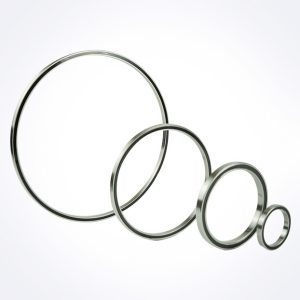Deep groove ball bearings are critical components in many mechanical systems. Their performance is heavily influenced by temperature conditions. Understanding these temperature limits is essential for optimal operation and longevity of the bearings.
Key Factors Affecting Temperature Limits
Material Composition
- The material of the bearing plays a crucial role in determining its temperature threshold.
- Common materials include chrome steel, stainless steel, and ceramic.
- Each material has a different heat tolerance level, impacting the bearing’s performance under various temperature conditions.
Lubrication
- Lubricants reduce friction and wear, affecting the bearing’s heat generation.
- Different lubricants have varying thermal properties and breakdown temperatures.
- The choice of lubricant can significantly influence the temperature limit of the bearing.
Sealing and Shielding
- Seals and shields protect the bearing from contaminants and retain lubrication.
- The type of seal or shield used can affect heat dissipation and retention, impacting the temperature range within which the bearing operates effectively.
Specific Temperature Limits
Chrome Steel Bearings
- Standard chrome steel bearings typically have a temperature range of -20°C to 150°C.
- Special treatments or coatings can extend this range up to 300°C.
Stainless Steel Bearings
- Stainless steel bearings can operate within -30°C to 180°C.
- They offer better corrosion resistance and are suitable for high-temperature environments.
Ceramic Bearings
- Ceramic bearings stand out for their ability to withstand higher temperatures, up to 1000°C in some cases.
- They are ideal for extremely high or low-temperature conditions and aggressive environments.
Impact on Performance and Lifespan
High Temperatures
- Bearings exposed to temperatures beyond their limit may experience material degradation, lubricant breakdown, and structural failure.
- High heat can reduce the hardness of the bearing material, leading to increased wear and decreased load capacity.
Low Temperatures
- At sub-zero temperatures, lubricants can become too viscous, increasing friction and wear.
- Material brittleness can increase, leading to a higher risk of cracking under impact or heavy loads.
Cost, Efficiency, and Specifications
Cost Implications
- Bearings designed for extreme temperatures typically cost more due to specialized materials and manufacturing processes.
- Long-term cost savings can be achieved through improved performance and reduced maintenance in demanding applications.
Efficiency and Specifications
- Bearings optimized for specific temperature ranges deliver higher efficiency by maintaining ideal operating conditions.
- Specific parameters like dimensional tolerances, load capacities, and speed limits are also influenced by temperature considerations.
Lifespan and Maintenance
- Properly selected bearings for given temperatureconditions have longer lifespans and require less frequent maintenance.
- Regular monitoring and maintenance can prevent temperature-related failures and extend the bearing’s operational life.

Conclusion
More details you need to know about the temperature limits of deep groove ball bearings are crucial for ensuring their optimal performance and longevity. Selecting the right bearing material, lubricant, and design based on temperature requirements is essential in various applications. Understanding these aspects helps in making informed decisions about bearing selection and maintenance, directly impacting the efficiency and cost-effectiveness of mechanical systems.
